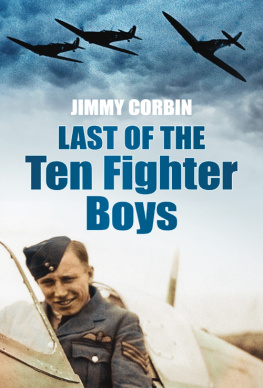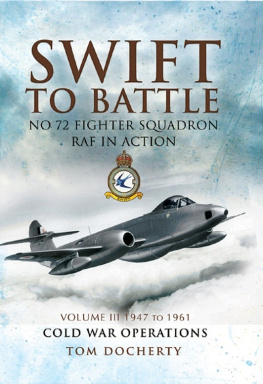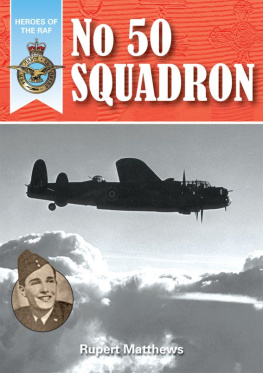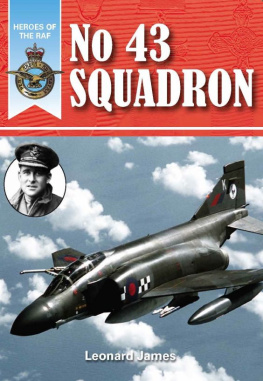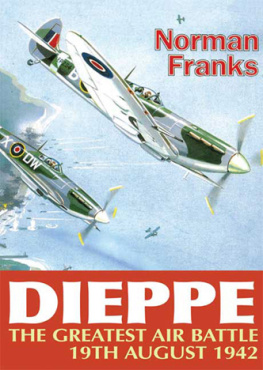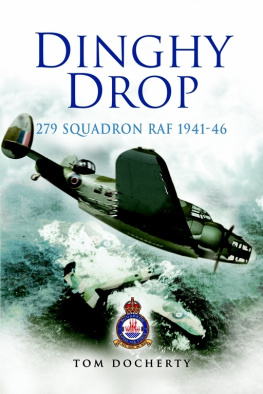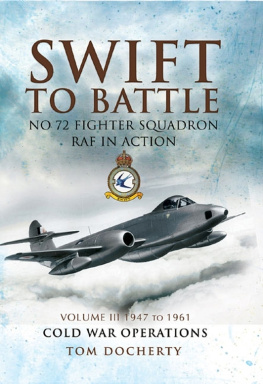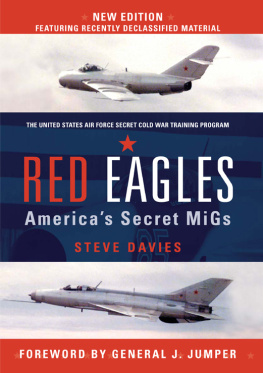First published in Great Britain in 2009 by
Pen & Sword Aviation
An imprint of
Pen & Sword Books Ltd
47 Church Street
Barnsley
South Yorkshire
S70 2AS
Copyright Tom Docherty 2009
9781783409266
The right of Tom Docherty to be identified as Author of this work has
been asserted by him in accordance with the Copyright, Designs and
Patents Act 1988.
A CIP catalogue record for this book is
available from the British Library
All rights reserved. No part of this book may be reproduced or
transmitted in any form or by any means, electronic or mechanical
including photocopying, recording or by any information storage and
retrieval system, without permission from the
Publisher in writing.
Typeset in 10pt Palatino by Mac Style, Beverley, East Yorkshire
Printed and bound in the UK by the MPG Books Group
Pen & Sword Books Ltd incorporates the Imprints of Pen & Sword
Aviation, Pen & Sword Maritime, Pen & Sword Military, Wharncliffe
Local History, Pen & Sword Select, Pen & Sword Military Classics, Leo
Cooper, Remember When, Seaforth Publishing and Frontline Publishing
For a complete list of Pen & Sword titles please contact
PEN & SWORD BOOKS LIMITED
47 Church Street, Barnsley, South Yorkshire, S70 2AS, England
E-mail: enquiries@pen-and-sword.co.uk
Website: www.pen-and-sword.co.uk
Acknowledgements
I cannot stress enough how grateful I am to the following people for their contributions to this book. A large number of them served with 72 Sqn, and many are staunch supporters of the No. 72 Squadron Association. Those of you already familiar with the squadron will note several names in these acknowledgements of persons who are now deceased. I have included them in the list in grateful thanks for their contributions, which otherwise would be lost to history.
Matt Adams
A.E. Allen
A. Allsopp
Roy Anderson
John Augoustis
Mick Bajcar
Jim Barton
Jeff Bird
Ted Boakes
Eric Boddice
Brian Bond
Ken Boyd
Paul Bradley
Steve Brew
Darryl Briggs
Jack Browne Jr
Ernie Burton
Mrs Casey
Chris Charland
A. Chater
Matt Clague
Malcolm Clarke
John Clegg
Jim Corbett
Jimmy Corbin
Joe Dade
C. Davis
Keith Deary
Patrick Downer
R.D. Elliot
T.A.F. Elsdon
Greggs Farish
Richard Ferriere
Vic Flintham
Diana Foster-Williams
Laurie Frampton
Michael J Freer
Graeme Gillard
Richard Gledhill
Fergal Goodman
Des Gorham
Ernie Graveney
Eric Gray
R.H. Gregory
Betty Gridley
Hugh Halliday
Ian Haskell
Robert Hawkins
Ben Hitt
Tom Hughes
Angela Jobson
Jack Lancaster
David Lane
Bruno Lecaplain
K. Lindsay
R. Lindsay
P.D. Lodge
Alan Lowe
Donald MacLean
Erik Mannings
Angus Mansfield
P. McMillan
Ross McNeill
John Meddows
Ron Mitchell
G.M. Monahan
D.C. Nichols
Roy Norfolk
Cyril Nugent
Tony Peacey
M.A. Pocock
D.E. Pool
Peter Pool
Harold Powell
Glyn Ramsden
Mark Ray
R. Rayner
Bill Rolls
Robbie Robertson
Rodney Scrase
Wallace Shackleton
M.J. Shaw
Desmond Sheen
Cedric Stone
Bert Sweetman
Ken Summers
John Sydes
Tom Thackray
Simon Thomas
Piet Van Schalkywyk
Sean Waller
K.C. Weller
Henk Welting
Jerry Wilkinson
Steve Williams
Ray Woods
Keith Worrall
Irvine Wright
Preface
I first considered writing the history of No. 72 Squadron in its entirety when I joined the squadron in 1993 and became the deputy squadronhistorian. At the time the squadron was in the early stages of forming a squadron association for both ex-air and ex-ground crew, from every period of its existence, as well as for serving members who wished to join. Since then I have been actively involved with the association as membership secretary, a post I still fill today.
Having collated a vast amount of information over this period and spoken to members of the association ranging in service from 1937 to the present, I realized that to cover the history in one book would not do it justice. The cost of such a book would put it out of reach of most buyers! Another reason I decided to limit the scope of the book was that from the late 1960s to 2002 No. 72 Squadron was actively involved in operations in Northern Ireland and much of its activities are still classified. It seemed logical, therefore, to look for natural breaks in the squadrons existence and cover that period in detail. Following a brief existence in World War I, and preceding its period as a support helicopter squadron, No. 72 Squadron existed as a fighter unit, both day and night, for a period of twenty-five years from 1937 to 1961.
This volume is a humble effort to record the history of the squadron during the period 1917 42 using official records and the reminiscences and recollections of those who lived and breathed No. 72 Squadron through this period of its life. Volume 2 will cover 1942 61. I hope that fellow historians will find it a useful reference and that the reader will enjoy the story of a famous squadron and its men.
T.G. Docherty
Forres
2008
CHAPTER ONE
World War I and Re-formation
W hen the First World War commenced in 1914 the Royal Flying Corps (RFC) was a very small part of the British Army and was equipped with a wide variety of flimsy biplanes, used in the main for artillery spotting and reconnaissance. By 1917 the RFC was a very different organization and had grown from the original small number of squadrons to over 100 operating some of the most advanced aircraft of the period.
It was in this expanded and still expanding RFC that No. 72 Squadron was formed on 28 June 1917. Commanded by Capt H.W. Von Poellnitz, the squadron was based at Upavon in Wiltshire and was equipped with Avro 504 trainers that it had brought with its nucleus of men and equipment from A Flight of the Central Flying School. The squadron had a training role at this point, and soon added the highly regarded Sopwith Pup to its inventory, training scout pilots for the Western Front. The squadron moved to Netheravon and then to Sedgeford in Norfolk, where it began preparations to move to Mesopotamia for operations against the Turks.
After a long journey by land and sea the squadron arrived in Basra and was joined by seventeen flying officers from Egypt. The squadron received two types of aircraft as its equipment the monoplane Bristol M1C, which despite official prejudice proved itself to be a very successful fighter type, and the Martinsyde G.100 Elephant, a slow but forgiving fighter/reconnaissance type. It was with these two types that the squadron fought a successful campaign in support of the Army.
With the formation of the Royal Air Force (RAF), 72 Sqn continued to serve in Persia, Mirjana and Samarra, before being recalled to Baghdad, where it was reduced to a cadre in February 1919. By September 1919 the rapid run-down of the RAF was in full swing, and among those to disband was 72 Squadron on 22 September 1919.
Maj H.W. Von Poellnitz. (72 Sqn)
Ground crew enjoying mounted wrestling during squadron sports, Christmas 1918. (72 Sqn)


